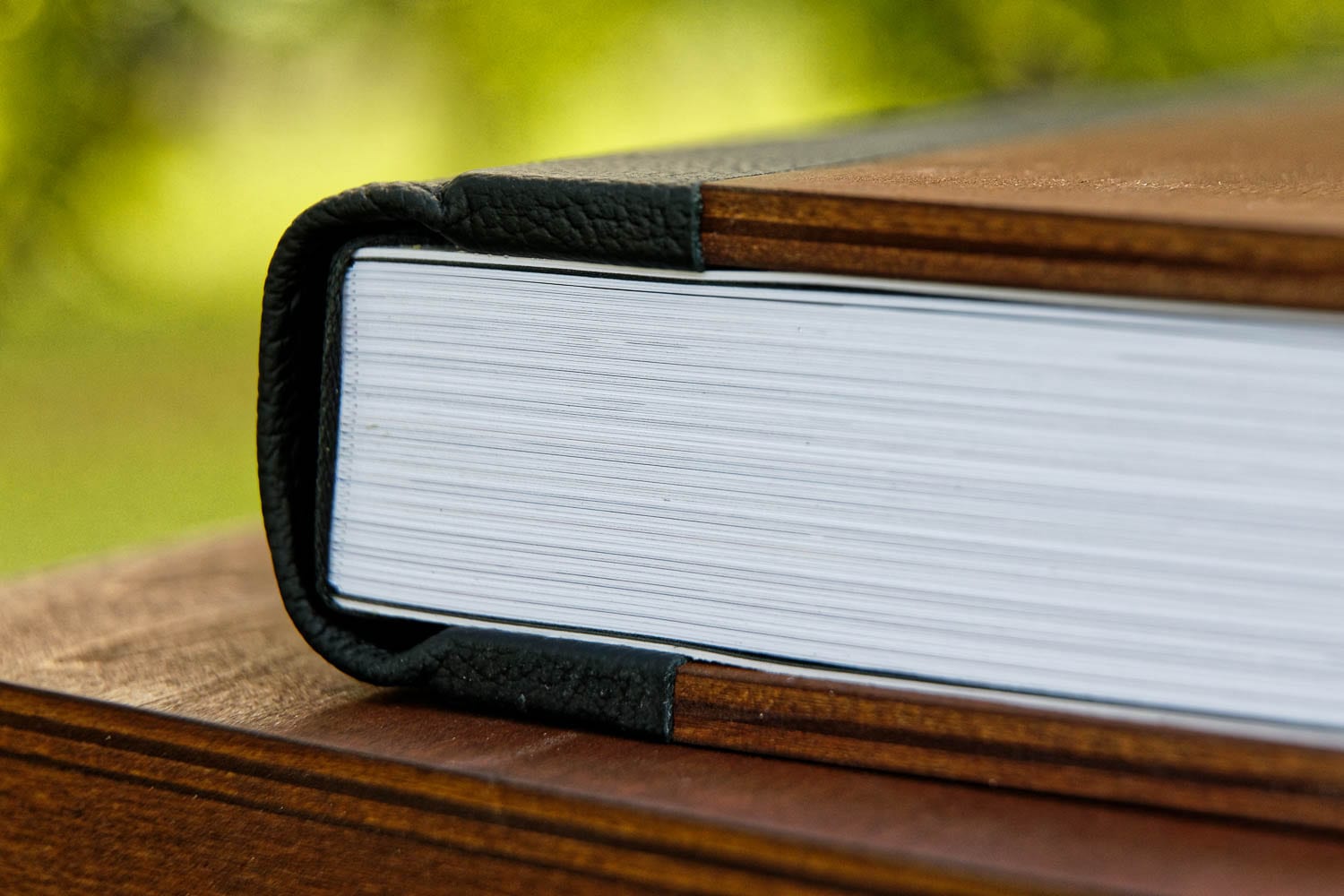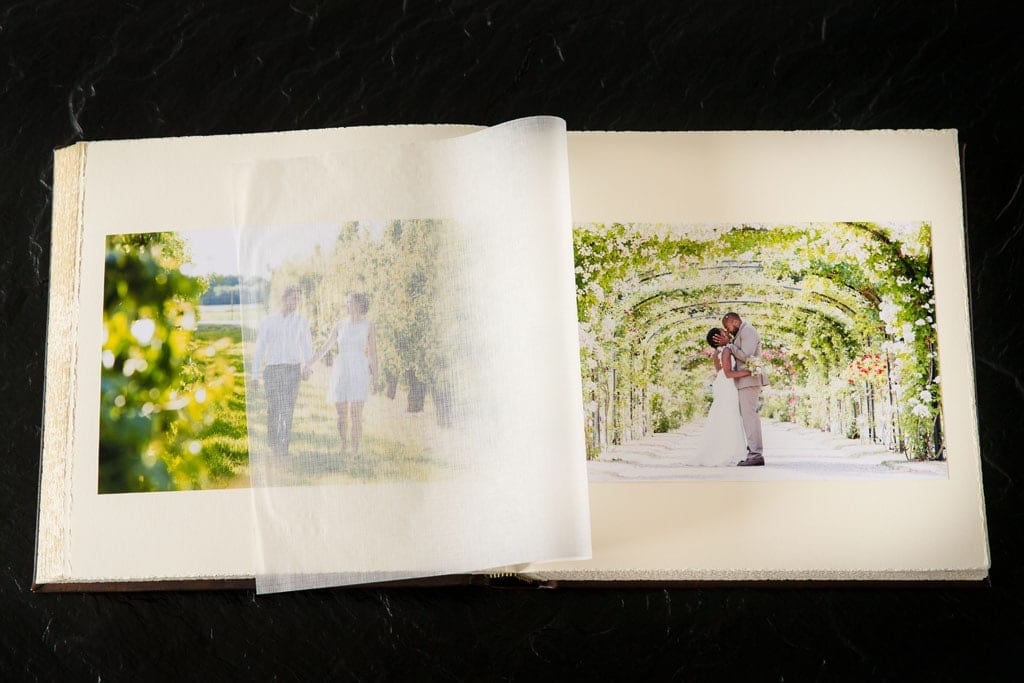
Judging the quality of a digital photo print can easily become very complex. Decide between several types of printing technologies (ink-jet, laser, etc.). Each of them gave advantages and inconveniences, all depending on what you are looking for. Let’s try to break down how photographers can choose the best technology regarding what they want to print.
This article will be technical about photography and printers. I will give you tips to understand why some (internet) prints are cheaper than others. If you are a professional printer, I won’t go that deep. Print quality could be the subject of an entire book about photography and printing techniques! But I will make a quick summary, in order to give you some insights to understand more about this obscure world invaded by marketing names that can confuse!
To select the best quality for the wedding photo books we offer, and for clients’ prints, we focused on 3 parameters: the definition of the image, the dynamic range of colors and the ability to resist the years.
I will explain to you why, for your wedding albums, I have chosen what I think is the best print quality to create an album that will last in decades: the Fujifilm Fuji color DPII Crystal Archive Digital Paper. The DPII Crystal is an RC (resin coated) paper, and its weight is 1000 grams per square meter. (1000 g/m2).
Table of Contents
Important terms involved in the printing process and their definitions
What is the print’s definition?
The print definition is the ability to offer the viewer little details. We usually give a definition in DPI (Dots per Inch). It’s the number of individual ink drops that you can find along a single inch.
The higher the DPI, the more detailed and sharper your picture is.
Some “new” printers can print up to 600 DPI (and even more).
But, for the record, do you know what the human eye capacity is? Well, when you look at a picture at 1 foot distance (which is usually the distance you look at your wedding book), the human brain cannot distinguish any difference over 300 DPI. So, except if you love looking at your print with your nose pressed against them (the way we used to look at tiny contacts printed in the old-time), I think a 300 DPI print is more than decent for a wedding book. A higher number would be a marketing trick!
600 DPI is sharper, so it is better, right?
To be honest, a few years ago I was excited to see photos printed with the new printers, in 600 DPI resolution. Well, my enthusiasm quickly calmed down. The difference is so subtle that I would recommend a bigger print (album) better than a higher resolution print.
What is the image’s dynamic range of print?
A blue sky is not made of only one color. It’s composed of an infinite variation of blue tones, which means a wide dynamic range of colors. The dynamic range is the ability to record the colors inside the spectrum not only from the darkest to the lightest color, but from the more saturated to the less saturated color.
The capacity to record and reproduce those thin color variations are first limited by the quality of the camera sensor, later by the software used to develop the image, and finally by the printer.
Infinite variation of color> sensors> software and ways to develop the digital file> printer
My aim is to find a printer that can bring all the colors stored in the digital image.
If today, all printers are almost equal regarding the print definition, there is still a tremendous gap regarding the dynamic of color sensitivity. In other words, the very best image file printed on cheap local printers will look like faded, washed out, bleached, colorless, decolorized, or oversaturated, with weird colors.
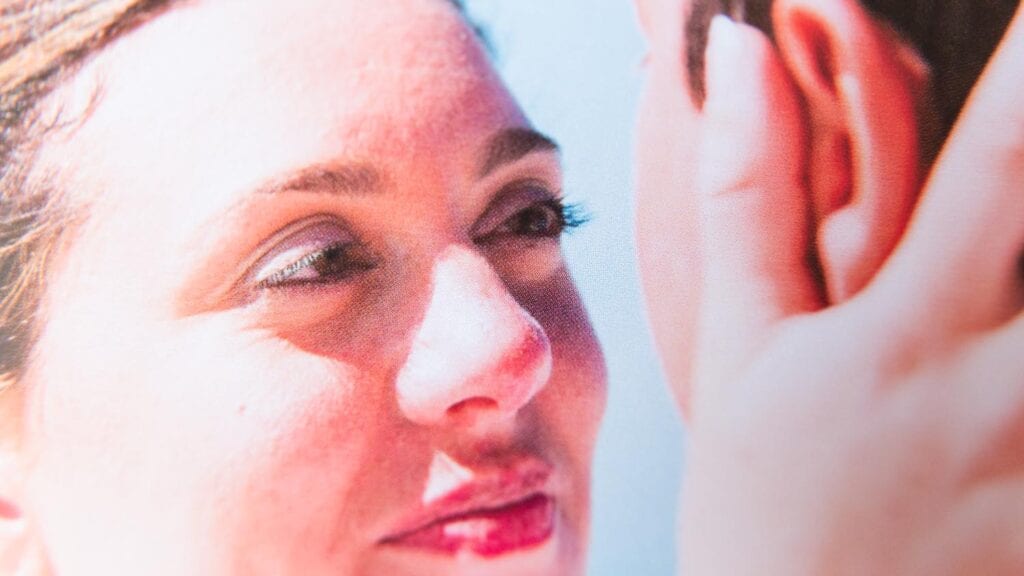
Why is image durability important?
Image durability is the capacity of your print to resist alteration throughout the years.
All kinds of prints are all made with chemical products. Undoubtedly you will see the aspect of the paper and the ink changing their aspect over the years. The question is: how many years can a print remain in a good shape? You don’t want your prints to become yellow in five years. Do you?
What can alter a print?
The most common reasons for image alteration at home are
- Smudge
- Stain
- Moisture
- Exposition to the sun light
- Finger prints (and the natural oil on them)
- Scratch resulting in ordinary manipulation with Sharpe elements (nails, ring, watch)
- Droplets of saliva
- Cigarette smoke
- Cooking fumes (when close to the kitchen)
- Temperature variation
Wedding albums and durability
Wedding albums are made to be open often, to be manipulated. And, even if we don’t see it, each time we manipulate an album, our fingers leave thousands of chemical substances on the surface of the paper. That is why the photo paper needs to be strong enough to resist physical and chemical alterations. And that’s also why all the wedding albums I suggest, including a box to protect them from dust and all other products.
The three different kinds of photo paper’s texture
Even if every technology uses a different paper, I will make it simple and quickly define the three most common kinds of texture: glossy, mat and pearl.
- Glossy paper: it will give you the feeling to have a more precise print (but it also shows imperfections). The big disadvantage of glossy, it’s that it becomes dirty as soon as you touch it (and you don’t want to see all of your fingerprints).
- Mat paper: traditionally the definition of mat texture is the opposite of the glossy, it is dull and not shiny at all. Let’s say it is usually a thick paper that absorbs all the ink and has a texture close to the velvet. The effect makes the dark colors darker. It is very nice for fine art prints, but needs a specific setting for your prints (if you don’t want to have too dark prints). Mat papers are usually good for ink-jet printers, especially the Hahnemühle. Be careful with the brand marketing. Indeed, today some brands can name “Mat paper” some very different kinds of paper, from a glossy/Pearl paper, to real mat paper.
- Pearl paper: it is a mix between a glossy paper (keep the shiny effect), and the velvet texture of the mat paper. The color is vibrant, and the paper doesn’t get dirty when you touch it.
Photo Paper Thickness:
Here again, it can change depending on the print technology and the ink. But let’s put it simply: the thicker the paper, the better it is. The thicker the paper, the longer it will last.
No big surprise that the thicker paper is also the most expensive one!
The three main technologies for printing photos
Professional photo market is mainly divided into two technologies: ink-jet, Silver Halide (argentic), laser. (Indeed, there are many more, like thermal printers, but I won’t speak about all of them.)
1/ Ink-jet printers
The concept is simple: a printer sprays liquid ink through a nozzle which is absorbed into the fibers.
The ink-jet printer that we “all” might have at home provides a very poor result for photo printing. But professional ink-jet printers can produce amazing results. They are called plotters and can usually print an A0 format! During many years we have seen a marketing war between printer builders (Canon, Epson), regarding who will manage to have the thinner ink drop and will provide the better print resolution (DPI). Today, all of them are almost well, and the war moved to another level.
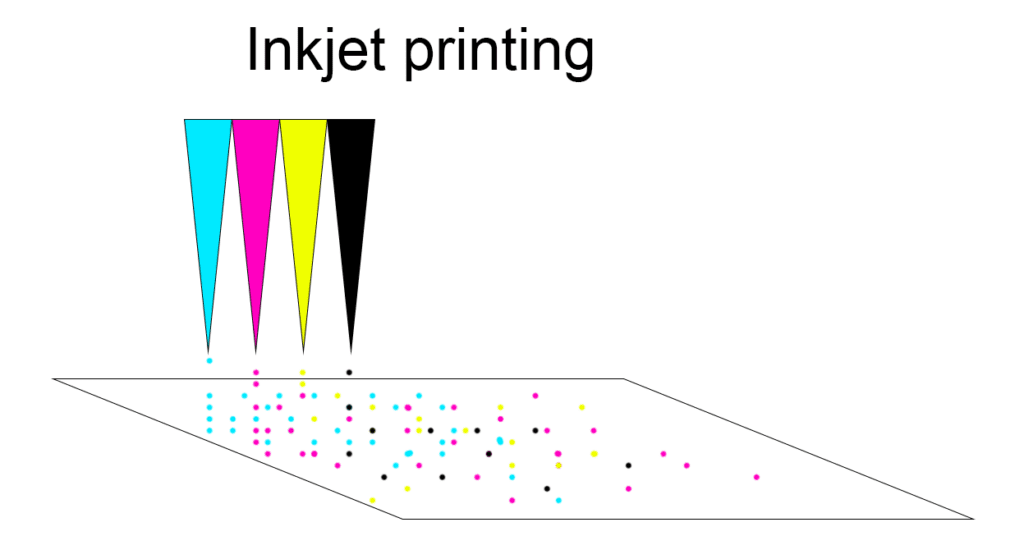
Ink-jet
Professional ink-jet printers use many colors of inks (not only the cyan, magenta, blue and Black). The pigments, and the way to mix them will provide a high dynamic range of colors.
Basic printers use the 4 fundamental cartridges : cyan, magenta, yellow and black. Professional ink-jet printers often use 6 cartridges and some use up to 12 different inks!
Pigments Ink
The best inks are made with pigments. A pigment is a kind of dust from natural rocks. And rocks do not fear the chemical reaction, so color is made to last forever.
Ink-jet Paper and Photography
There are a lot of brands of paper (Ilford, Hahnemühle, Kodak, Fuji, Canon, and many more). They all offer different kinds of paper: glossy, matted, satin and pearl paper. The paper affects the colors’ aspect (whiter or more yellow/blue), and the contrast (the deepness of the dark). But, let’s say that in most cases, changes due to the brand will be so minor that we can’t really notice. That’s why I do not choose a paper based on the brand, but more on the texture of the paper.
The texture of the paper will also affect the way you feel the image.
One of the specificities of professional ink-jet technology printers is also to print very large prints, which is not possible with all the technologies.
Fine art prints
Print on soft and high quality Archival paper, fine arts prints are usually framed and hang on the wall. Artists love the textures of the fine art paper previously mentioned, and usually print limited edition prints, as a work of art.
Limits of the Ink-jet
I think that the only concern I have on the prints is that they are too delicate. Indeed, the fibers are designed to “absorb” any liquid. It means that if you accidentally spit on a print… well, the image will be irremediably damaged.
Constructors have thought about that, and now printers have an option to add a protective lacquer layer. But I think this protection is still delicate, and it is not made to be manipulated.
To Summarize the Ink-jet Printer
I recommend ink-jet printers for posters you will hang in your living room under a protective glass. I use professional ink-jet prints for my exhibitions. They offer a huge dynamic of colors, and a high definition. Even with a protective varnish, I think ink-jet prints are too delicate to be manipulated for your wedding book. The paper has the propriety to “drink” ink, and also every chemical particle in suspension in the air.
Thus, the paper will turn yellow in a couple of years. And I guess it is not what you want for your wedding album.

2/ Laser Printer and photography
Laser print technology can widely change from one brand/model to the other. There is a very wide difference in quality. Basically, quality goes from the copy machine (to avoid photography) to a professional laser printer.
The technology is an electrostatic reaction. First the paper entering the machine is charged with electrostatics. The laser creates a hot point on a drum, charging it with an opposite charge. When the paper and the drum come in contact, the magic happens. The ink, which is a powder stocked in a toner, melts, and through the electrostatic reaction is to be transferred to the paper. That’s why basically all kinds of paper can go into a photocopy machine.
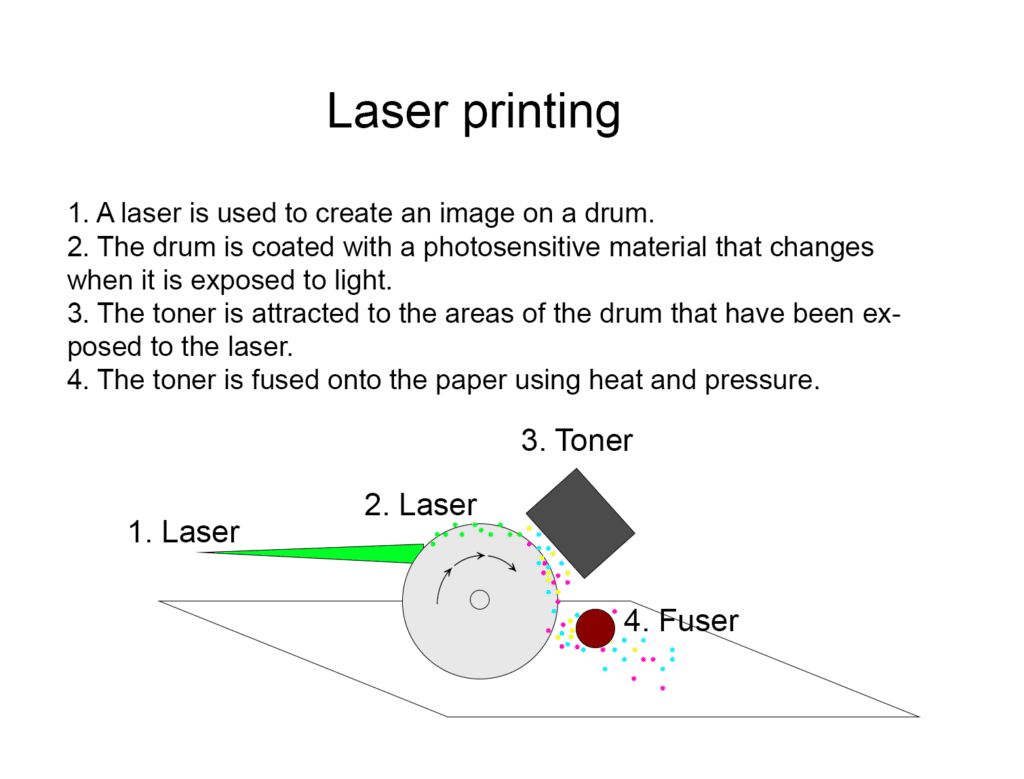
Advantage and Disadvantage of Laser Printers Regarding Photography
The professional laser printer resolution is now high enough to create decent images for photography. Even if the printed image is not amazing, the result is good enough to have an idea of the photography.
The major inconvenience comes from the paper and the ink themselves. First the paper (which can be any type)is not protected, and will easily react with all the chemical particles in suspension in the air, which means having the corner turn yellow. Secondly, given the ink is applied to the top layer of the paper, it means the image is not protected. In other words, when you touch it, pigments will stay attached to your fingers, and the prints are extremely sensitive to alteration (saliva drops, for instance).
Laser prints on the internet
Laser prints are indecently cheaper than other technology, and that’s usually the technology you will find on the internet.
Today, the printer can apply a layer of protection to the print, which is great to manipulate them. But yet, the paper won’t last very long before turning yellow, and the color dynamic range is pretty poor (black is not deep black, and white, the white of the paper).
3/ The Traditional Silver Halide Process
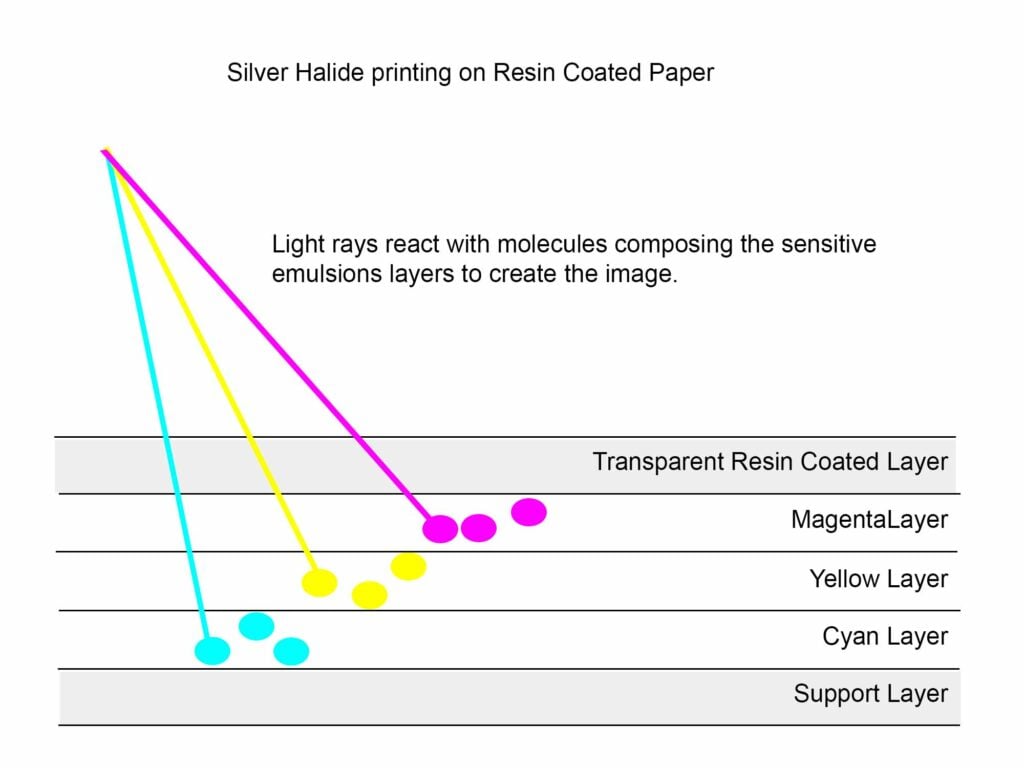
This technique was created in the 60’s. Today, even if printers are now digital and use digital image, they still print on the same photo sensitive paper, using the same technology (the one used int traditional mini-lab). The only difference is how the image is projected on the paper. Before the light went through the negative photographer film and exposed the photographic paper. Today it’s usually a laser that is used to light the photographer. That said, we should not make any mistake, it’s not a Laser printer.
Indeed, here, the paper still passes through several chemical baths: developer, bleach/fix, a wash, and dryer. It’s the same old photo RC paper that our parents used.
One kind of Paper, several brands and several texture
Basically, the paper used is a photographic photo paper, cold RC paper. There is a Resin Coated that protects the paper. There are several brands on the market. They may change the result, but not that much.
Given it’s a chemical reaction, the number of color dynamics is very large, and the definition precise (at a molecular scale!).
What will change the aspect of the print would be the texture (glossy, mat, pearl, etc?)
The chemical process and a cost
The RC paper is designed with 5 layers : a supportive layer (usually a white plastic) and on the top, a layer of transparent plastic (only one side is printable).
In between the two layers of plastic you find three layers of photosensitive chemicals. They are made of silver halide ions in gelatine and a halide ion (fluorine, chlorine, bromine, or iodine). Under the light, they react together to create a stabilized molecule of salt (silver salt).
RC papers can have several textures (lustre, matte, glossy). The plastic layer can have a velvety texture trying to imitate the mat paper of the ink-jet paper.
As you may know, silver is a pretty expensive material. As a result the price of such a printing process is expensive.
The Good Quality Prints Selected for Weddings albums
Professional Photographers focus on the RC paper that I consider as the best paper for the wedding albums and enlargement up to large print sizes. So the RC paper naturally protected the picture! This means that you can drop a coffee on the picture, quickly clean it, and there will be no problem. RC paper is often named argentic paper.
Good printers will also print in very high definition and have a very large dynamic of colors.
To Summarize on Silver Halide Prints
I believe that a professional photo print, on RC paper (Resin Coated), is what is today the best for the wedding album. Indeed, RC paper provides a huge definition, a wide range of colors, and is water resistant. It will last decades or even centuries. Choose a paper with a pearl texture, and you will forget fingerprints.
Other existing technologies to print pictures and mistakes to avoid
There are many printing technologies, depending on what you want to print. For instance, magnet, mugs, canvas, desk calendar, or blanket, won’t use the same technology as a photograph or a poster. Even if they all pretend to be Quality photos.
Instant film
Polaroid and many other brands (such as Fuji) sell Instant film. Even if those pictures are really fun (they are printed quickly), I have a big doubt that they will clearly not last in time. After a few months you can already witness the color fading.
The Offset print quality
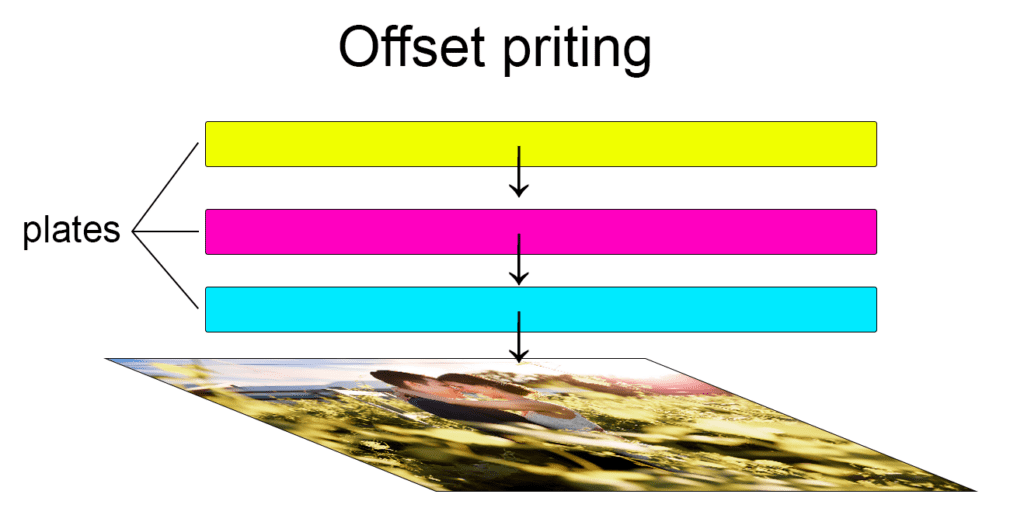
Offset prints: it is a very confusing word, because it can refer to several technologies. It basically means that the ink is transferred from one drum to the paper and not directly applied on the paper but on plates.
Offset print often designs the technology when the paper receives numerous layers of ink in successive way (cyan, magenta, yellow, black, etc). For each color a unique plate (in metal) is created.
No need to say that those types of processes have a significant starting cost that reserved it for high volume. It’s not designed for small prints.
It’s the technology used to print your cereal box.
Thermal printer, Dye-Sublimation prints
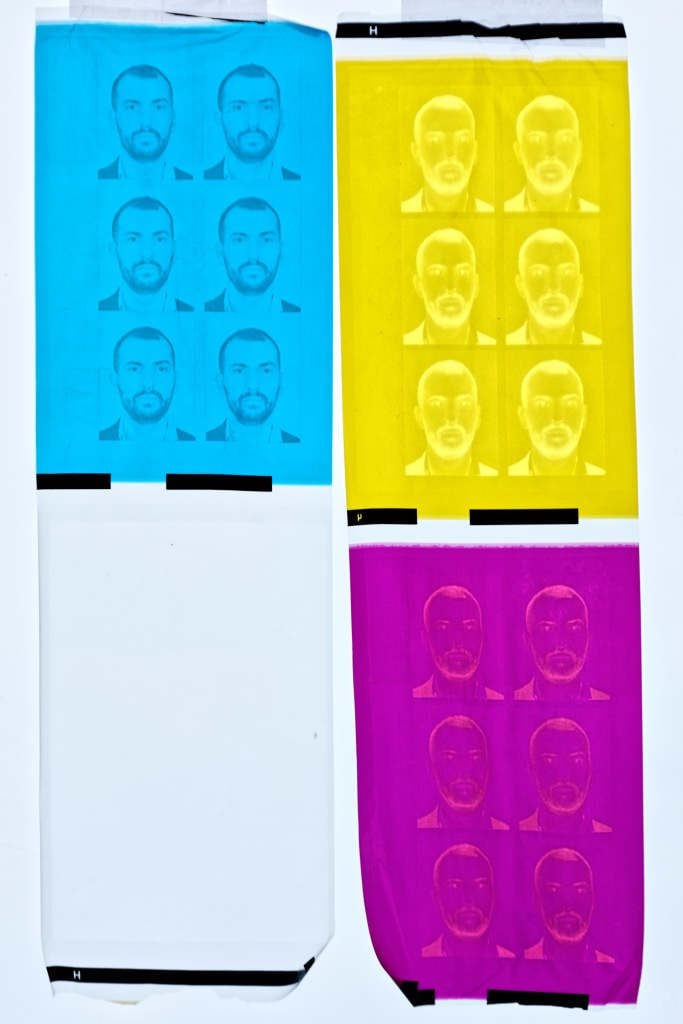
Those printers heat a solid dye-ink (usually an ink-roll made with cyan, magenta, yellow, grey) and transfer them on different kinds of surfaces. It’s pretty quick and clean (to use), and it’s used to print photography. Major “photography labs” such as Walgreens, Walmart use those kinds of printers. We also use a similar one for our photo-booth because it’s easy to transport. But those images would probably not last forever.
Indeed, thermal paper is a heat-sensitive paper, and will continue to react continuously to the temperature!
Thermal printing is pretty cost effective for small jobs.
Side by side
Side by side comparison on details : Silver Halide, vs Inkjet, vs Dye-Sublimation, vs Offset.
Knowing that we have explained the theory, I wanted to show what is the result in the real world.
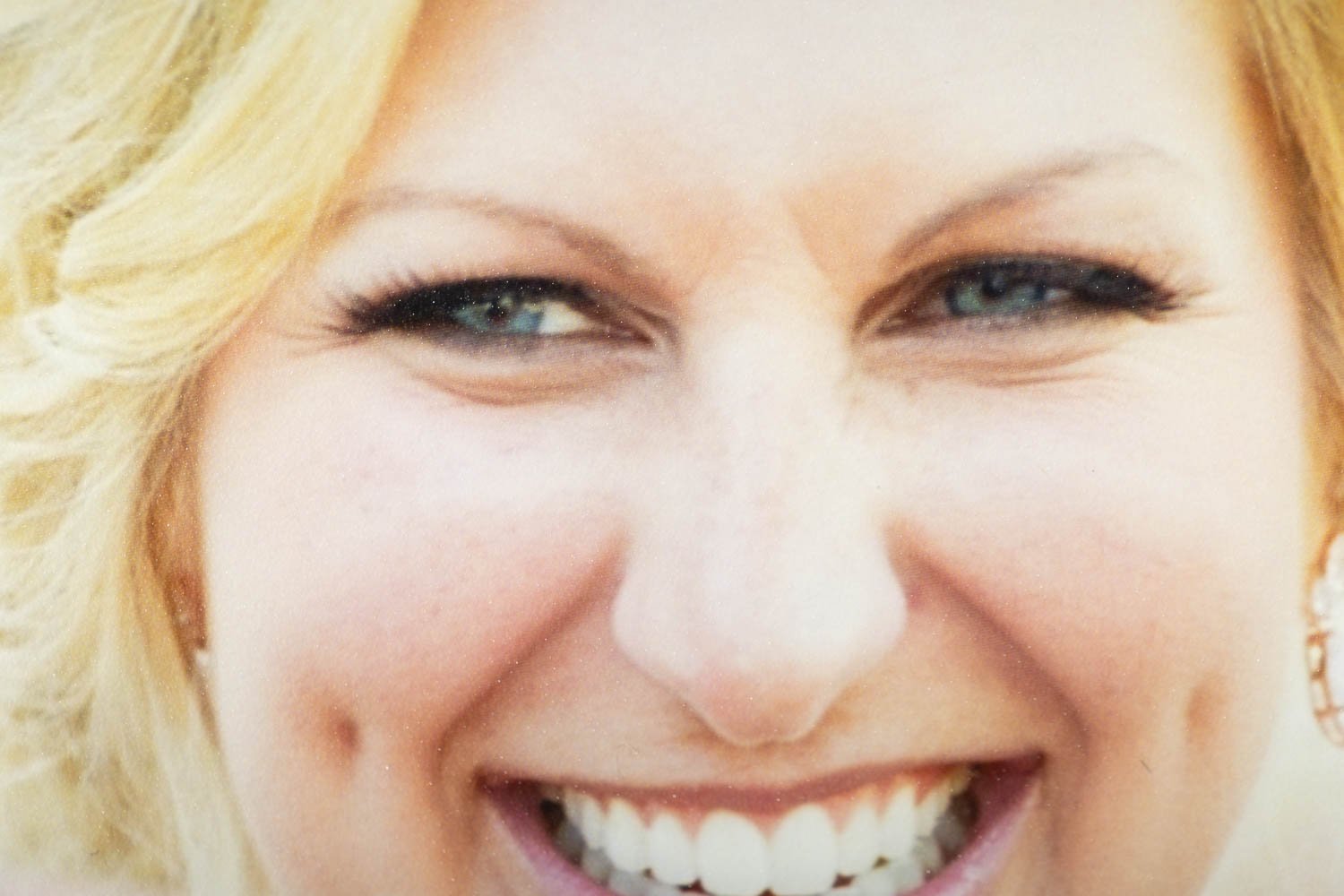
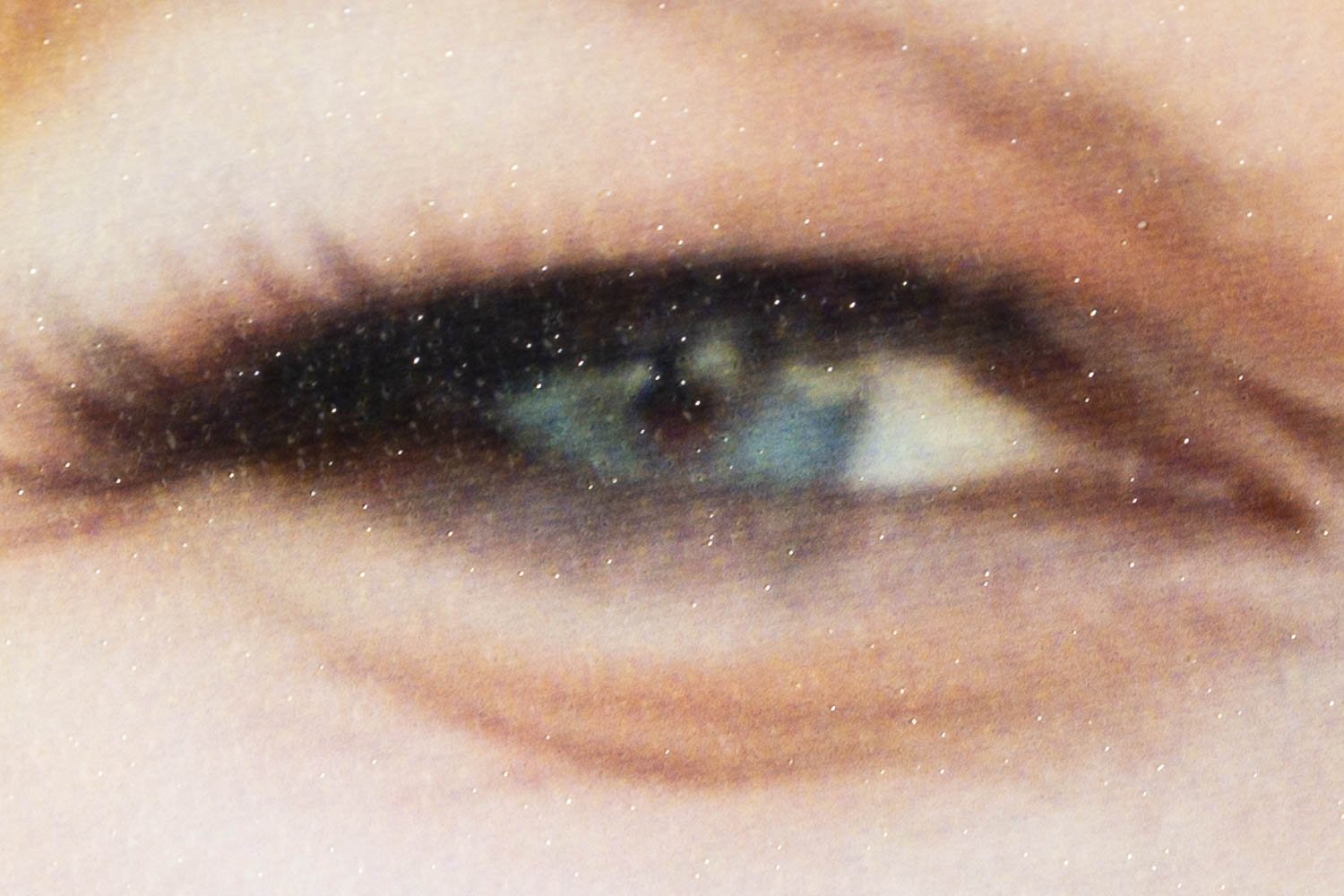

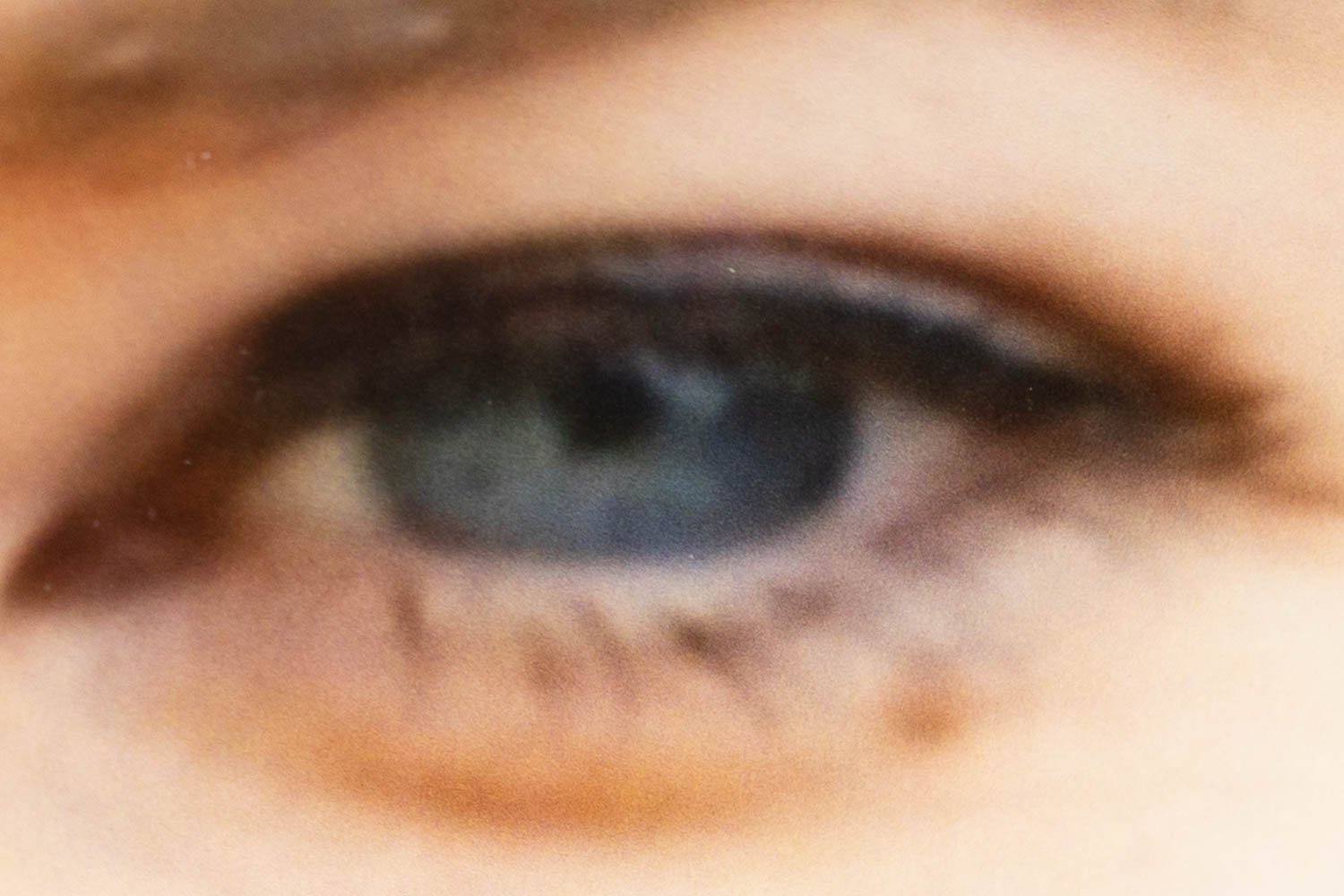
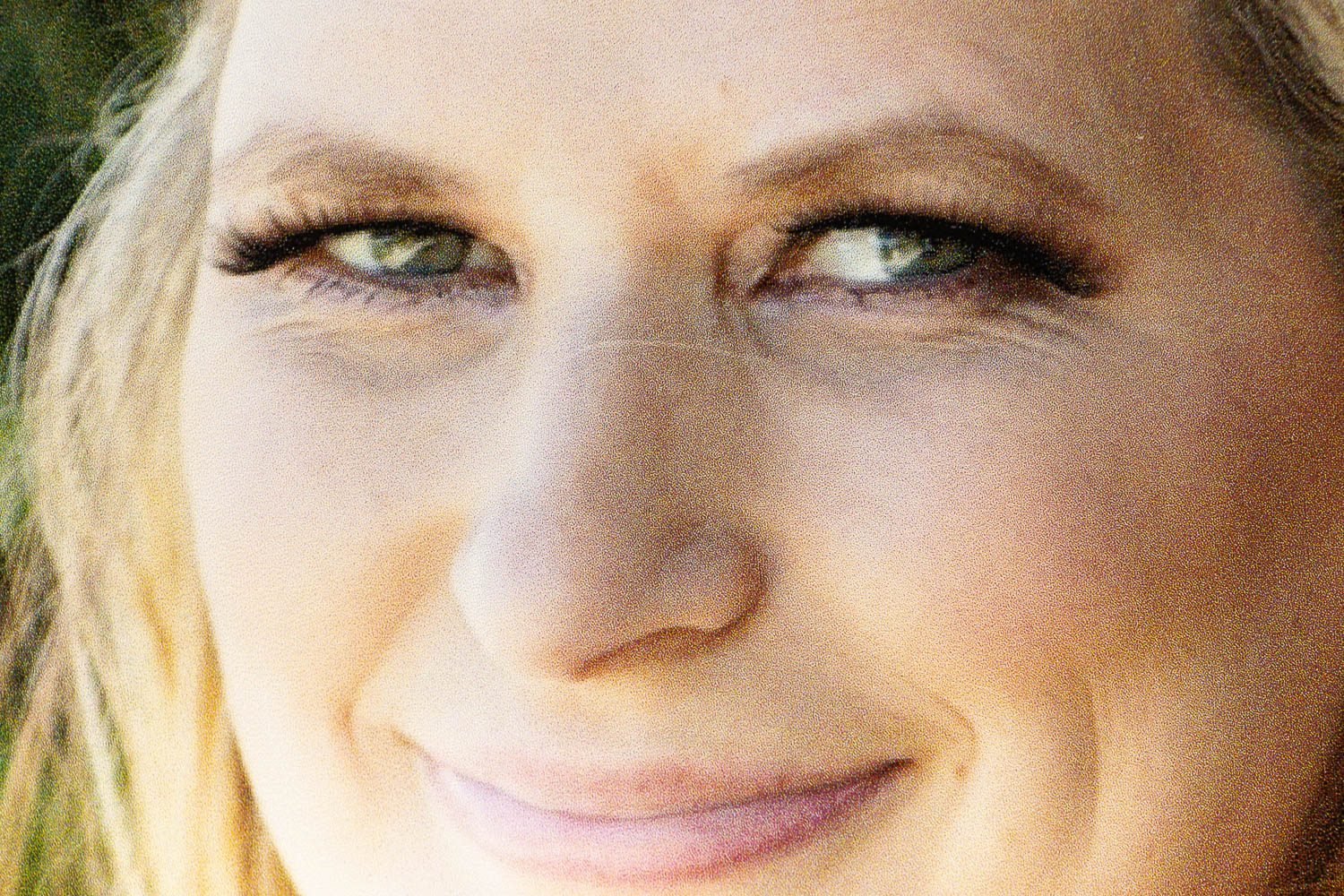
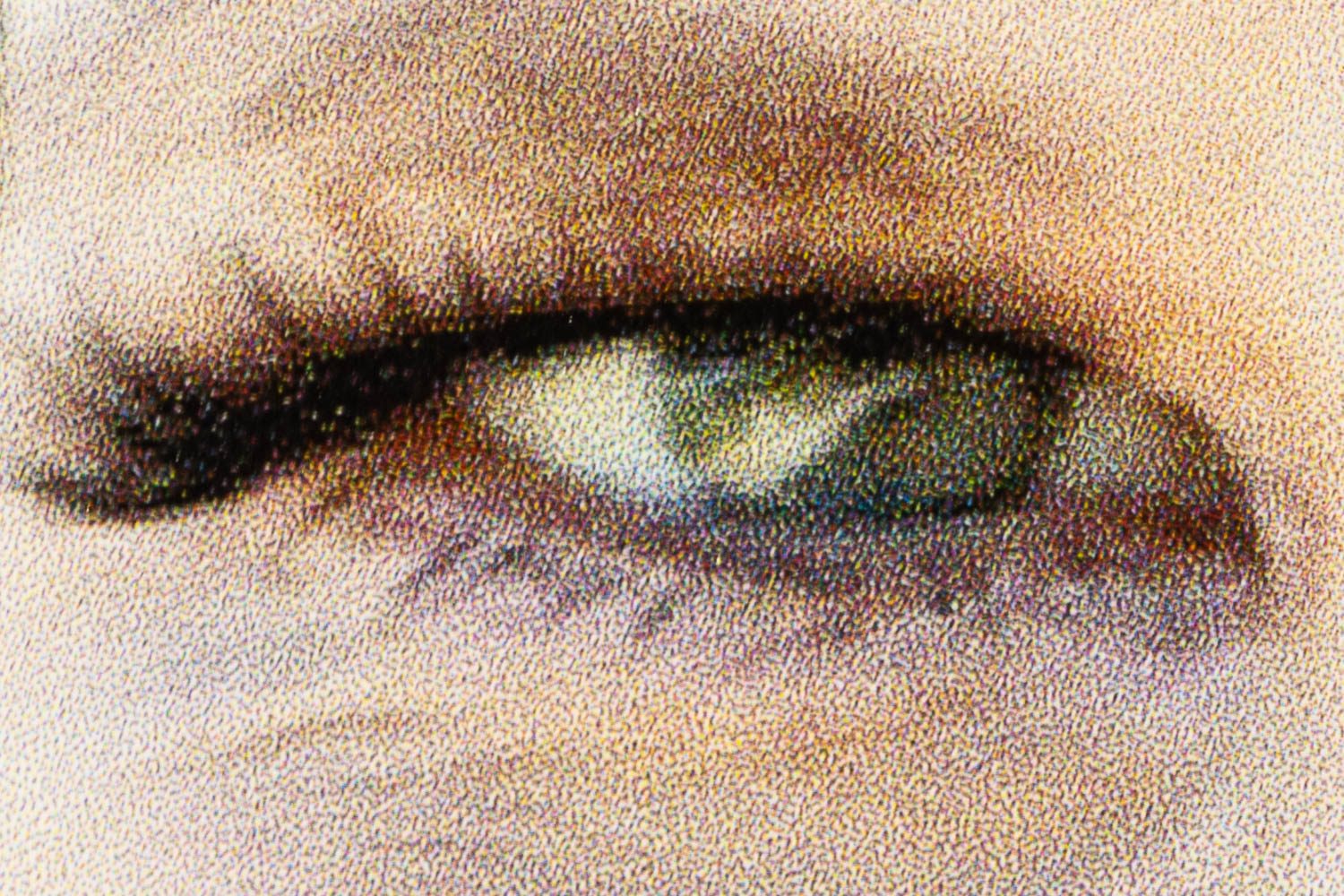

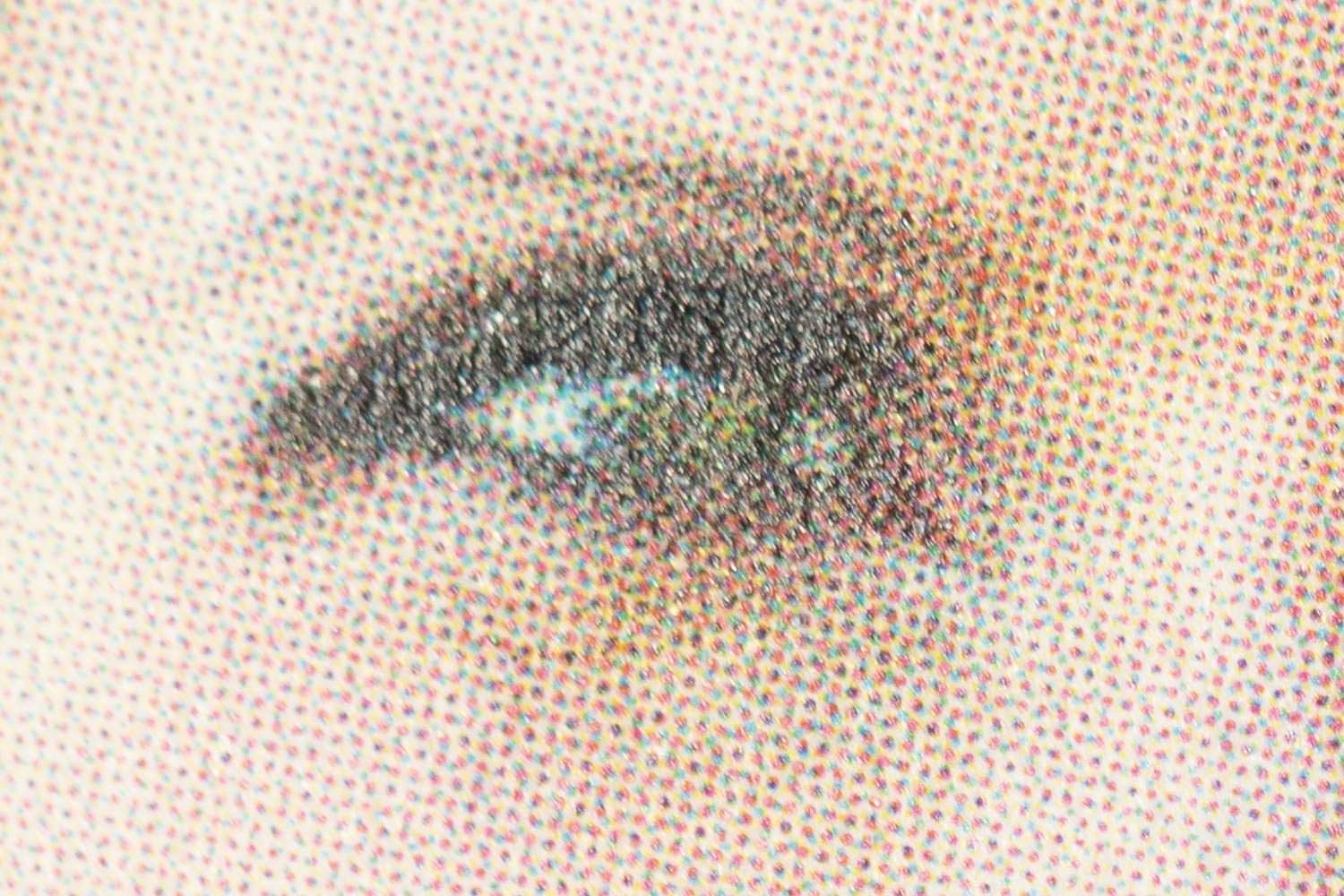
To produce this side by side comparison I have selected quite similar prints (what I have already
available and printed). I picked similar images but printed with different technology.
For each, I show you a really closeup image, and I even zoom in to keep only the eye of the bride.
Result: which is sharper?
- The Silver Halide: the image is sharp, and the eye is correct. We don’t see dots, and variations of tones continue. The tiny white spots are due to the pearl texture of the photo paper.
- Inkjet: It’s really sharp and we can see the dots.. Colors are correct, even if there is not a smooth variation.
- Dye-Sublimation: It’s the blurrier of all. It’s something you notice immediately when looking at the image. (For the record the first time I printed on that, I thought my lens had an issue given the blur).
- Offset: It’s very sharp but also the dots are very big. The colors are not great. Black are clearly not dark enough.
What to pay attention on when printing your (own) wedding pictures yourself
Photo paper
Every lab will pretend to use “photo quality” or “photo paper quality” for the wedding books they sell. Do you understand the difference?
Some labs make the distinction between photo quality paper (which is usually cheap and thin paper) and the real photo paper! So even for me it is confusing. Be careful, there is only one way: touch the paper.
Internet Prints: How to Judge the Quality of a Print
First you need to know what is the definition of the print (must be over 240 dpi), then the technology used (laser print or RC paper), and then the thickness of the paper. There is no secret: a cheap package with a lot of prints for a cheap price means cheap quality.
Can you trust Walmart/Walgreen to print your images?
I have tried both. They use what I consider as a very cheap paper, very thin, with a very poor dynamic of colors. I do not recommend that at all.
Learn more;
on mini lab: https://en.wikipedia.org/wiki/Minilab
The RC paper https://www.freedompaper.com/inkjet-photo-paper-resin-coated
a laser printer: https://www.techtarget.com/whatis/definition/laser-printer
Thermal and Ink-jet printer: https://www.toptenreviews.com/inkjet-vs-laser-printer-which-is-best
